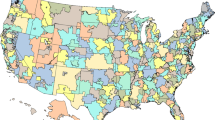Abstract
This issue of the journal concerns promotion of the routine use of outcome measures in clinical practice; the purpose of this particular article, however, is to warn care providers to thinkvery very carefully before routinely using such measures. Just what are the benefits of their use? What are the outcome measures intended to demonstrate? In order to try to convince the reader that there might be real difficulties in the interpretation of the results, the main body of the paper concentrates on the difficulties in the interpretation of data from a structured research project that has been specifically designed to evaluate an innovation in mental health care provision. The difficulties of interpreting haphazardly collected data as part of routine clinical or administrative practice will be far greater. One of the main purposes of an evaluative exercise is comparison: which approach to service provision is the better? If care providers really want to be involved in mental health service evaluation then their time would be much better spent in taking part in a large multicentre trial.
Similar content being viewed by others
References
Buck C, Donner A (1982) The design of controlled experiments in the evaluation of non-therapeutic interventions. J Chronic Dis 35: 531–538
Cochran WG (1983) Planning and analysis of observational studies. Wiley, Chichester New York
Collett D (1991) Modelling binary data. Chapman & Hall, London
Cook TD, Campbell TD (1979) Quasi-experimentation: design and analysiss issues for field settings. Houghton-Mifflin, Boston
Cornfield J (1978) Randomization by group: a formal analysis. Am J Epidemiol 108: 100–102
Day SJ, Graham DF (1991) Sample size estimation for comparing two or more treatment groups in clinical trials. Stat Med 10: 33–43
Donner A, Klar N (1993) Confidence interval construction for effect measures arising from cluster randomization trials. J Clin Epidemiol 46: 123–131
Donner A, Brown KS, Brasher P (1990) A methodological review of non-therapeutic intervention trials employing cluster randomzation, 1979–1989. Int J Epidemiol 19: 795–800
Duffy SW, South MC, Day NE (1992) Cluster randomization in large public health trials: the importance of antecedent data. Stat Med 11: 307–316
Dunn G (1989) Design and analysis of reliability studies: the statistical evaluation of measurement errors. Edward Arnold, London
Dunn G (1992) Design and analysis of reliability studies. Stat Methods Med Res 1: 123–157
Fleiss JL (1987) Design and analysis of clinical experiments. Wiley, Chichester New York
Gardner MJ, Altman DG (1989) Statistics with confidence. BMJ, London
Goldstein H (1987) Multilevel models in educational and social research. Griffin, London
Greenwood RJ, McMillan TM, Brooks DN, Dunn G, Brock D, Dinsdale S, Murphy LD, Price JR (1994) An investigation into the effects of case management after severe head injury. BMJ 308: 1199–1205
Hill AB (1955) Introduction to medical statistics, 5th edn. (Monograph) Lancet London
Hsieh FY (1988) Sample size formulae for intervention studies with the cluster as unit of randomization. Stat Med 8: 1195–1201
Hurlbert SH (1984) Pseudoreplication in the design of ecological field experiments Ecol Monogr 54: 187–211
Johnson AL (1989) Methodology of clinical trials in psychiatry In: Freeman C, Tyrer P (eds) Research methods in psychiatry. Royal College of Psychiatrists. London, pp 12–45
Lachin JM (1981) Introduction to sample size determination and power analysis for clinical trials. Controlled Clin Trials 2: 93–113
Manly BFJ (1992) The design and analysis of research studies. Cambridge University Press, Cambridge
Pocock S (1983) Clinical trials: a practical approach. Wiley, Winchester New York
Shipley MJ, Smith PG, Dramaix M (1989) Calculation of power for matched pair studies when randomization is by group. Int J Epidemiol 18: 457–461
Spitzer WO, Feinstein AR, Sackett DL (1975) What is a health care trial? J Am Med Assoc 233: 161–163
Streiner DL, Norman GR (1989) Health measurement scales: a practical guide to their development and use. Oxford University Press, Oxford
Wright JG, Feinstein AR (1992) A comparative contrast of clinimetric and psychometric methods for constructing indexes and rating scales. J Clin Epidemiol 45: 1201–1218
Author information
Authors and Affiliations
Rights and permissions
About this article
Cite this article
Dunn, G. Statistical methods for measuring outcomes. Soc Psychiatry Psychiatr Epidemiol 29, 198–204 (1994). https://doi.org/10.1007/BF00796377
Accepted:
Issue Date:
DOI: https://doi.org/10.1007/BF00796377




